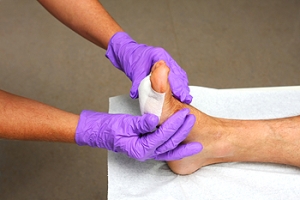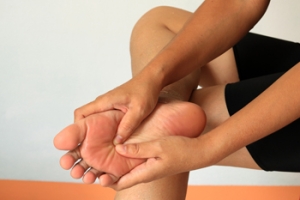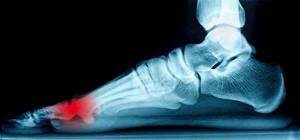Connect With Us
Blog

Reasons for Experiencing Pain in the Ball of the Foot
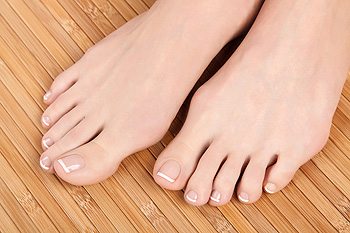 The ball of the foot is located between the arch of the foot and the toes, and it primarily contains metatarsal bones. While walking, weight is transferred from the heel to the ball of the foot, and an uneven weight transfer can cause pain and swelling in that area. As you get older, the fat pad at the bottom of the foot can wear away and cause shock to the ball of the foot. Pain in the ball of the foot can also be caused by high arches, obesity, arthritis, ill-fitting shoes, and wearing high heels too often. If you are looking to manage and limit this type of pain from becoming worse, please consult with a podiatrist for professional guidance.
The ball of the foot is located between the arch of the foot and the toes, and it primarily contains metatarsal bones. While walking, weight is transferred from the heel to the ball of the foot, and an uneven weight transfer can cause pain and swelling in that area. As you get older, the fat pad at the bottom of the foot can wear away and cause shock to the ball of the foot. Pain in the ball of the foot can also be caused by high arches, obesity, arthritis, ill-fitting shoes, and wearing high heels too often. If you are looking to manage and limit this type of pain from becoming worse, please consult with a podiatrist for professional guidance.
Foot Pain
Foot pain can be extremely painful and debilitating. If you have a foot pain, consult with Howard Kimmel, DPM from Buckeye Foot Care. Our doctor will assess your condition and provide you with quality foot and ankle treatment.
Causes
Foot pain is a very broad condition that could be caused by one or more ailments. The most common include:
- Bunions
- Hammertoes
- Plantar Fasciitis
- Bone Spurs
- Corns
- Tarsal Tunnel Syndrome
- Ingrown Toenails
- Arthritis (such as Gout, Rheumatoid, and Osteoarthritis)
- Flat Feet
- Injury (from stress fractures, broken toe, foot, ankle, Achilles tendon ruptures, and sprains)
- And more
Diagnosis
To figure out the cause of foot pain, podiatrists utilize several different methods. This can range from simple visual inspections and sensation tests to X-rays and MRI scans. Prior medical history, family medical history, and any recent physical traumatic events will all be taken into consideration for a proper diagnosis.
Treatment
Treatment depends upon the cause of the foot pain. Whether it is resting, staying off the foot, or having surgery; podiatrists have a number of treatment options available for foot pain.
If you have any questions, please feel free to contact one of our offices located in Brook Park and Willoughby, OH . We offer the newest diagnostic and treatment technologies for all your foot care needs.
Foot Pain
Our feet are arguably the most important parts of our bodies because they are responsible for getting us from place to place. However, we often don’t think about our feet until they begin to hurt. If you have pain in your feet, you need to first determine where on the foot you are experiencing it to get to the root of the problem. The most common areas to feel pain on the foot are the heel and the ankle.
Heel pain is most commonly attributed to a condition called plantar fasciitis. Plantar fasciitis occurs when the plantar fascia, which is the band of tough tissue connecting the heel bone to the toes becomes inflamed. Plantar fasciitis pain is usually worse in the morning, and it tends to go away throughout the day. If you have plantar fasciitis, you should rest your foot and do heel and foot muscles stretches. Wearing shoes with proper arch support and a cushioned sole has also been proven to be beneficial.
Some common symptoms of foot pain are redness, swelling, and stiffness. Foot pain can be dull or sharp depending on its underlying cause. Toe pain can also occur, and it is usually caused by gout, bunions, hammertoes, ingrown toenails, sprains, fractures, and corns.
If you have severe pain in your feet, you should immediately seek assistance from your podiatrist for treatment. Depending on the cause of your pain, your podiatrist may give you a variety of treatment options.
What is Plantar Fasciitis?
 Plantar Fasciitis is the inflammation of the tissue, known as the plantar fascia, that connects the heel bone to the toes. This tissue is responsible for supporting the bones on the arch of the foot, as well as absorbing the strain that is put on the feet during exercises. The most common symptom of plantar fasciitis is pain in the heel bone, particularly where the plantar fascia connects to the heel bone. Pain is most commonly felt when getting up in the morning or after a long time of remaining stationary. Causes may include tight calf muscles, being overweight, high arches, or high impact activities such as hiking or running. For pain relief, it is suggested to rest and ice the affected area, and custom orthotics may be beneficial as well. If you are experiencing pain in your heel, it is recommended to see a podiatrist for a proper diagnosis and the best treatment options available.
Plantar Fasciitis is the inflammation of the tissue, known as the plantar fascia, that connects the heel bone to the toes. This tissue is responsible for supporting the bones on the arch of the foot, as well as absorbing the strain that is put on the feet during exercises. The most common symptom of plantar fasciitis is pain in the heel bone, particularly where the plantar fascia connects to the heel bone. Pain is most commonly felt when getting up in the morning or after a long time of remaining stationary. Causes may include tight calf muscles, being overweight, high arches, or high impact activities such as hiking or running. For pain relief, it is suggested to rest and ice the affected area, and custom orthotics may be beneficial as well. If you are experiencing pain in your heel, it is recommended to see a podiatrist for a proper diagnosis and the best treatment options available.
Plantar fasciitis can be very painful and inconvenient. If you are experiencing heel pain or symptoms of plantar fasciitis, contact Howard Kimmel, DPM from Buckeye Foot Care. Our doctor can provide the care you need to keep you pain-free and on your feet.
What Is Plantar Fasciitis?
Plantar fasciitis is the inflammation of the thick band of tissue that runs along the bottom of your foot, known as the plantar fascia, and causes mild to severe heel pain.
What Causes Plantar Fasciitis?
- Excessive running
- Non-supportive shoes
- Overpronation
- Repeated stretching and tearing of the plantar fascia
How Can It Be Treated?
- Conservative measures – anti-inflammatories, ice packs, stretching exercises, physical therapy, orthotic devices
- Shockwave therapy – sound waves are sent to the affected area to facilitate healing and are usually used for chronic cases of plantar fasciitis
- Surgery – usually only used as a last resort when all else fails. The plantar fascia can be surgically detached from the heel
While very treatable, plantar fasciitis is definitely not something that should be ignored. Especially in severe cases, speaking to your doctor right away is highly recommended to avoid complications and severe heel pain. Your podiatrist can work with you to provide the appropriate treatment options tailored to your condition.
If you have any questions please feel free to contact one of our offices located in Brook Park and Willoughby, OH . We offer the newest diagnostic and treatment technologies for all your foot and ankle needs.
Plantar Fasciitis
The plantar fascia is a connective tissue in the heel that stretches across the bottom length of your foot. Plantar fasciitis occurs when the connective tissue becomes inflamed, causing heel pain and discomfort during physical activity. Although the condition is completely treatable, traditional methods can take up to a year to start becoming effective.
Plantar fasciitis is caused by a number of everyday activities, so understanding the condition is important for managing and treating it. One of the most common causes of plantar fasciitis is excessive running, especially with improper fitting or non-supportive shoes. Too much exercise can lead to the plantar fascia being overworked and overstretched, which can cause tears in the tissue. Along with improper fitting shoes, pronation, the rolling of the feet inward, is a common cause of plantar fasciitis. If not treated properly, the plantar fascia becomes overstretched and starts to tear, causing inflammation.
Despite the common causes of plantar fasciitis, there are many different treatment options. For less severe cases, conservative home remedies include taking anti-inflammatory drugs to alleviate pain, applying ice packs to the bottom of your foot and heel, slowly stretching and exercising your feet to re-strengthen the tissue, and using orthotic devices are all ways to help manage your plantar fasciitis.
For more severe cases, shockwave therapy has become a common solution for plantar fasciitis. Shockwave therapy can effectively break up the tissue on the bottom of your foot which facilitates healing and regeneration. This fights the chronic pain caused by plantar fasciitis. Even if this doesn’t work, surgery is always a final option. Surgery on the tissue itself can be done to permanently correct the issue and stop the inflammation and pain in your heels.
No matter what the case may be, consulting your podiatrist is the first and best step to recovery. Even the slightest amount of heel pain could be the first stage of plantar fasciitis. Untreated symptoms can lead to the tearing and overstretching of tissue. Because the tearing of tissue can be compounded if it remains ignored, it can evolve into a severe case. The solution is early detection and early treatment. Talk to your podiatrist about the possibilities of plantar fasciitis if you’re experiencing heel pain.
What is a Corn?
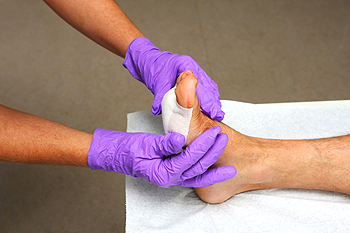 Corns are formed by a buildup of hard and dead skin that usually forms around the toe joints. The most common cause of corns is poorly fitting shoes, but activities like running and climbing can lead to corns as well. They normally form in a cone-like shape and work as the foot’s method of protection from friction. Ultimately this extra skin can cause uncomfortable pressure on the feet. Corns are very common and are also treatable. The most common solutions are to wear properly fitting shoes and to take pressure off of the corn as often as possible. If you continue to experience issues with corns, or you have preexisting conditions like diabetes, poor blood flow, or fragile skin, please consult with a podiatrist.
Corns are formed by a buildup of hard and dead skin that usually forms around the toe joints. The most common cause of corns is poorly fitting shoes, but activities like running and climbing can lead to corns as well. They normally form in a cone-like shape and work as the foot’s method of protection from friction. Ultimately this extra skin can cause uncomfortable pressure on the feet. Corns are very common and are also treatable. The most common solutions are to wear properly fitting shoes and to take pressure off of the corn as often as possible. If you continue to experience issues with corns, or you have preexisting conditions like diabetes, poor blood flow, or fragile skin, please consult with a podiatrist.
Corns can make walking very painful and should be treated immediately. If you have questions regarding your feet and ankles, contact Howard Kimmel, DPM of Buckeye Foot Care. Our doctor will treat your foot and ankle needs.
Corns: What Are They? And How Do You Get Rid of Them?
Corns are thickened areas on the skin that can become painful. They are caused by excessive pressure and friction on the skin. Corns press into the deeper layers of the skin and are usually round in shape.
Ways to Prevent Corns
There are many ways to get rid of painful corns such as:
- Wearing properly fitting shoes that have been measured by a professional
- Wearing shoes that are not sharply pointed or have high heels
- Wearing only shoes that offer support
Treating Corns
Although most corns slowly disappear when the friction or pressure stops, this isn’t always the case. Consult with your podiatrist to determine the best treatment option for your case of corns.
If you have any questions please feel free to contact one of our offices located in Brook Park and Willoughby, OH . We offer the newest diagnostic and treatment technologies for all your foot and ankle needs.
Corns: What Are They, and How Do You Get Rid of Them
Corns are thickened areas on the skin’s surface, to the point of being irritating and sometimes painful. Commonly found on the feet, corns are circular or cone-shaped. They develop where there are areas of pressure or friction, such as on the little toe when it rubs up against shoes, or on the ball of your foot.
Corns are often confused with a callus, but there is a difference between them. Corns can be raised bumps that are painful to the touch. They consist of a rough, thick area of skin that may be dry or waxy. Corns tend to be surrounded by skin that is inflamed, and are usually much smaller than calluses.
Removing the dead skin that has built up is the key in treating corns. Salicylic acid medication is most common in accomplishing this. The acid works by dissolving keratin, which is the protein that makes up the majority of corns. You can purchase salicylic acid over-the-counter in products such as wart removers. It comes in a variety of forms such as medicated pads, drops, or creams. However, people who are diabetic should not use salicylic acid, but should instead consult their doctor immediately.
According to the product directions, applying the medication directly onto the corn will treat it. The top layer of the corn will begin to turn white after use. When that occurs, the layers of skin can then be peeled away, making the corn smaller. Shaving off corns with razors or other pedicure equipment is never a good idea. This can lead to infection. If your corn gets infected, and is not treated immediately, a visit to the doctor will be necessary.
Another way to treat corns and help prevent their return is by using orthotic inserts, fitted by a podiatrist. Inserts fit right into your shoes and adjusts the way your foot fits into your shoes. This fixes the way you walk. This will lower your chances of getting corns, and eliminate current corns by reducing rubbing from friction.
Surgery is rarely used to treat corns, but does occur on occasion. Surgery actually deals with the underlying issue that causes corns. During surgery, the bone is shaved and any abnormalities are corrected, thus reducing the amount of friction that occurs during walking.
To prevent corns, the first step is reducing friction. Always wear shoes that fit well and don’t rub your feet. Pads can be purchased if you notice rubbing developing. These pads can be purchased over-the-counter, and can be simply placed on the irritated area. Wearing cushioned insoles in your shoes can always reduce the friction, and making sure to wear well-fitting shoes. This will ensure that your foot is not being squeezed awkwardly, and prevent corns from forming in the first place.
Arthritis Can Cause Pain in the Feet and Ankles
What Does Morton’s Neuroma Feel Like?
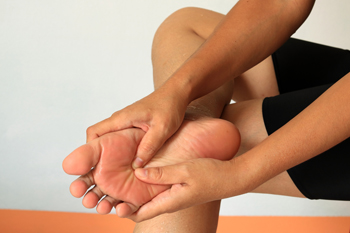 Morton’s neuroma is a foot condition caused by an enlarged nerve or thickening of tissue surrounding a nerve, most commonly between the third and fourth toes. Those who have experienced this condition often relay feeling pain in the ball of their foot. Common symptoms that can accompany Morton’s neuroma include burning in the ball of your foot that can also be reached in the toes, a numbing or tingling sensation felt in the toes, and feeling as if a pebble is stuck inside your shoe. To help relieve the discomfort of Morton’s neuroma, patients have found custom orthotics and acupuncture to be beneficial. In order to properly diagnose this condition and to receive prompt treatment, it’s suggested that you speak with a podiatrist for professional care and attention.
Morton’s neuroma is a foot condition caused by an enlarged nerve or thickening of tissue surrounding a nerve, most commonly between the third and fourth toes. Those who have experienced this condition often relay feeling pain in the ball of their foot. Common symptoms that can accompany Morton’s neuroma include burning in the ball of your foot that can also be reached in the toes, a numbing or tingling sensation felt in the toes, and feeling as if a pebble is stuck inside your shoe. To help relieve the discomfort of Morton’s neuroma, patients have found custom orthotics and acupuncture to be beneficial. In order to properly diagnose this condition and to receive prompt treatment, it’s suggested that you speak with a podiatrist for professional care and attention.
Morton’s neuroma is a very uncomfortable condition to live with. If you think you have Morton’s neuroma, contact Howard Kimmel, DPM of Buckeye Foot Care. Our doctor will attend to all of your foot care needs and answer any of your related questions.
Morton’s Neuroma
Morton's neuroma is a painful foot condition that commonly affects the areas between the second and third or third and fourth toe, although other areas of the foot are also susceptible. Morton’s neuroma is caused by an inflamed nerve in the foot that is being squeezed and aggravated by surrounding bones.
What Increases the Chances of Having Morton’s Neuroma?
- Ill-fitting high heels or shoes that add pressure to the toe or foot
- Jogging, running or any sport that involves constant impact to the foot
- Flat feet, bunions, and any other foot deformities
Morton’s neuroma is a very treatable condition. Orthotics and shoe inserts can often be used to alleviate the pain on the forefront of the feet. In more severe cases, corticosteroids can also be prescribed. In order to figure out the best treatment for your neuroma, it’s recommended to seek the care of a podiatrist who can diagnose your condition and provide different treatment options.
If you have any questions, please feel free to contact one of our offices located in Brook Park and Willoughby, OH . We offer the newest diagnostic and treatment technologies for all your foot care needs.
What is Morton's Neuroma?
Morton’s neuroma, (also referred to as Morton’s metatarsalgia, Morton’s neuralgia, plantar neuroma or intermetatarsal neuroma) is a condition that is caused when the tissue around one of the nerves between your toes begins to thicken. This thickening can result in pain in the ball of the foot. Fortunately, the condition itself is not cancerous.
Morton’s neuroma affects women more often than men with a ratio of 4:1. It tends to target women between the age of 50 and 60, but it can occur in people of all ages. There are some risk factors that may put you at a slightly higher risk of developing the condition. People who often wear narrow or high-heeled shoes are often found to be linked to Morton’s neuroma. Additionally, activities such as running or jogging can put an enormous amount of pressure on the ligament and cause the nerve to thicken.
There usually aren’t any outward symptoms of this condition. A person who has Morton’s neuroma may feel as if they are standing on a pebble in their shoe. They may also feel a tingling or numbness in the toes as well as a burning pain in the ball of their foot that may radiate to their toes.
In order to properly diagnose you, the doctor will press on your foot to feel for a mass or tender spot. He may also do a series of tests such as x-rays, an ultrasound, or an MRI. X-rays are usually done to rule out any other causes for your foot pain such as a stress fracture. Ultrasounds are used to reveal soft tissue abnormalities that may exist, such as neuromas. Your podiatrist may want to use an MRI in order to visualize your soft tissues.
There are three main options for treatment of Morton’s neuroma: Injections, decompression surgery, and removal of the nerve. Injections of steroids into the painful area have been proven to help those with Morton’s neuroma. Decompression surgery has been shown to relieve pressure on the affected nerve by cutting nearby structures such as the ligaments in the foot. Another treatment option would be to surgically remove the growth to provide pain relief.
If you suspect that you have Morton’s neuroma you should make an appointment with your podiatrist right away. You shouldn’t ignore any foot pain that lasts longer than a few days, especially if the pain does not improve.
Sesamoiditis May Affect the Joints in the Big Toe
 The pain that is felt when sesamoiditis is present generally encompasses the area under the big toe. Discomfort can be felt on the sole of the foot, and it may spread throughout the entire area of the big toe. This condition can occur from overuse while participating in running and jumping activities. Additionally, patients may experience a change in walking patterns from wearing shoes that do not fit correctly, which can lead to sesamoiditis. Moderate relief may be found when the intense activity is stopped, and it can help to wear shoes that are comfortable and fit properly. If you think you may have developed this condition, and would like a proper diagnosis, please consult with a podiatrist who can recommend the best treatment for you.
The pain that is felt when sesamoiditis is present generally encompasses the area under the big toe. Discomfort can be felt on the sole of the foot, and it may spread throughout the entire area of the big toe. This condition can occur from overuse while participating in running and jumping activities. Additionally, patients may experience a change in walking patterns from wearing shoes that do not fit correctly, which can lead to sesamoiditis. Moderate relief may be found when the intense activity is stopped, and it can help to wear shoes that are comfortable and fit properly. If you think you may have developed this condition, and would like a proper diagnosis, please consult with a podiatrist who can recommend the best treatment for you.
Sesamoiditis is an unpleasant foot condition characterized by pain in the balls of the feet. If you think you’re struggling with sesamoiditis, contact Howard Kimmel, DPM of Buckeye Foot Care. Our doctor will treat your condition thoroughly and effectively.
Sesamoiditis
Sesamoiditis is a condition of the foot that affects the ball of the foot. It is more common in younger people than it is in older people. It can also occur with people who have begun a new exercise program, since their bodies are adjusting to the new physical regimen. Pain may also be caused by the inflammation of tendons surrounding the bones. It is important to seek treatment in its early stages because if you ignore the pain, this condition can lead to more serious problems such as severe irritation and bone fractures.
Causes of Sesamoiditis
- Sudden increase in activity
- Increase in physically strenuous movement without a proper warm up or build up
- Foot structure: those who have smaller, bonier feet or those with a high arch may be more susceptible
Treatment for sesamoiditis is non-invasive and simple. Doctors may recommend a strict rest period where the patient forgoes most physical activity. This will help give the patient time to heal their feet through limited activity. For serious cases, it is best to speak with your doctor to determine a treatment option that will help your specific needs.
If you have any questions please feel free to contact one of our offices located in Brook Park and Willoughby, OH . We offer the newest diagnostic and treatment technologies for all your foot and ankle needs.


